Related Research Articles

Norma is a small constellation in the Southern Celestial Hemisphere between Ara and Lupus, one of twelve drawn up in the 18th century by French astronomer Nicolas-Louis de Lacaille and one of several depicting scientific instruments. Its name is Latin for normal, referring to a right angle, and is variously considered to represent a rule, a carpenter's square, a set square or a level. It remains one of the 88 modern constellations.
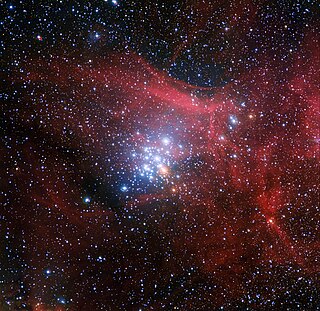
NGC 3293 is an open cluster in the Carina constellation. It was discovered by Nicolas-Louis de Lacaille in 1751. It consists of more than 100 stars brighter than 14th magnitude in a 10 arc minute field, the brightest of which are blue supergiants of apparent magnitude 6.5 and 6.7. There is also a 7th magnitude pulsating red supergiant, V361 Carinae.

NGC 7686 is a moderately-sized open cluster in the constellation Andromeda, containing about 80 stars. At magnitude 5.6, it is an easy target for binoculars and small telescopes.
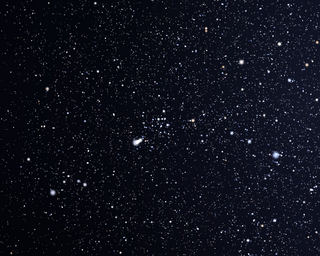
NGC 6204 is an open cluster in the constellation Ara, lying close to the galactic equator. It is 3,540 ly distant from Earth. The cluster was discovered on 13 May 1826 by British astronomer James Dunlop.

NGC 2281 is an open cluster of stars in the northern constellation of Auriga. It was discovered by English astronomer William Herschel on March 4, 1788 and described as a, "cluster of coarsely scattered pretty [bright] stars, pretty rich". The Trumpler class for NGC 2281 is I3p, indicating a poor (p) but compact (I) grouping with a wide range of brightness (3). It is located at a distance of approximately 1,720 ly from the Sun and is 630–661 million years old.
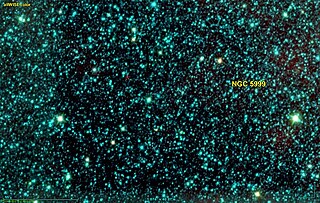
NGC 5999 is an open cluster in the constellation Norma. Its brightest star is HIP 78355. It is 5310 light-years distant and thought to be around 400 million years old.
NGC 6005 is an open cluster in the constellation Norma. It is 5875 light-years distant and thought to be around 1.15 billion years old.
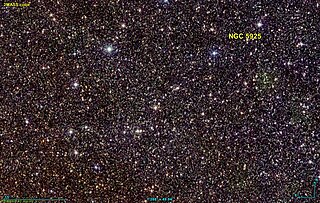
NGC 5925 is an open cluster in the constellation Norma. It is 5070 light-years distant and thought to be around 316 million years old.
NGC 6169 is an open cluster in the constellation Norma. It is 3280 light-years distant and thought to be around 32 million years old.
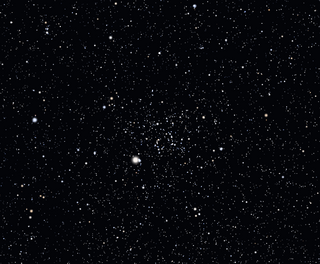
NGC 2539 is an open cluster in the constellation Puppis, located at the north edge of the constellation. It was discovered by William Herschel on January 31, 1785. It is a moderately rich cluster and with little central concentration, with Trumpler class II1m.

NGC 3228 is an open cluster in Vela. It was discovered by Nicolas Louis de Lacaille in 1751–1752, while he was in South Africa and catalogued it as Lac II.7. It is small but bright and can be observed easily with binoculars in sufficiently dark skies.

NGC 5460 is an open cluster in the constellation Centaurus. It is a bright but loose cluster of intermediate age located approximately 2,300 light years away from Earth. It is located nearly 2 degrees east-southeast of Zeta Centauri.

NGC 5617 is an open cluster in the constellation Centaurus. NGC 5617 forms a binary open cluster with Trumpler 22. It lies one degree west-northwest of Alpha Centauri.

NGC 5316 is an open cluster in the constellation Centaurus. It was discovered by James Dunlop in 1826. Located approximately 4,000 light years away from Earth, it is located in the Carina-Sagittarius arm.

NGC 4349 is an open cluster in the constellation Crux. It was discovered by James Dunlop in 1826. It is located approximately 7,000 light years away from Earth.
NGC 4815 is an open cluster in the constellation Musca. It was discovered by John Herschel in 1834. It is located approximately 10,000 light years away from Earth.

NGC 2527 is an open cluster in the constellation Puppis. It was discovered by William Herschel on December 9, 1784. The cluster was also observed by John Herschel on January 7, 1831. He also observed it on February 5, 1837, identifying it as a different object, which was catalogued as NGC 2520. It is a poor cluster and with no central concentration, with Trumpler class III1p.

NGC 7160 is an open cluster in the constellation Cepheus. It was discovered by William Herschel on November 9, 1789. The cluster was also observed by John Herschel on October 7, 1829. It is a poor cluster and with little central concentration, with Trumpler class II3p. It is part of the stellar association Cepheus OB2, located one degree south-southwest of VV Cephei.
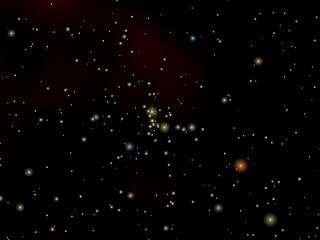
NGC 6910 is an open cluster in the constellation Cygnus. It was discovered by William Herschel on October 17, 1786. The cluster was also observed by John Herschel on September 18, 1828. It is a poor cluster with prominent central concentration and Trumpler class I2p. NGC 6910 is the core cluster of the stellar association Cygnus OB9.

NGC 1444 is a small open cluster of stars in the northern constellation of Perseus, about 2-1⁄4° to the northwest of 43 Persei. It has an angular diameter of 4 arcminutes and a brightness of 6.60 in visual magnitude. The cluster has sixty members of seventh magnitude or fainter, and is better appreciated in larger telescopes. NGC 1444 was discovered on 18 December 1788 by the German-British astronomer William Herschel. It is located at a distance of 4,200 light-years from the Sun and is about 7.1 million years old. The cluster has a physical core radius of 1.73 ± 0.42 ly and a tidal radius of 17.4 ± 4.2 ly. The most prominent member is the triple star system Σ446, with a magnitude 6.7 primary. The cluster is a member of the Camelopardalis OB1 association.
References
- 1 2 3 "NGC 6115 -- Open (galactic) Cluster". SIMBAD. Centre de Données astronomiques de Strasbourg . Retrieved 17 August 2015.
- 1 2 3 Kharchenko, N. V.; Piskunov, A. E.; Schilbach, E.; Röser, S.; Scholz, R.-D. (2013). "Global survey of star clusters in the Milky Way. II. The catalogue of basic parameters". Astronomy and Astrophysics. 558: 8. arXiv: 1308.5822 . Bibcode:2013A&A...558A..53K. doi:10.1051/0004-6361/201322302. S2CID 118548517. A53.
- ↑ Streicher, Magda (2005). "Deepsky Delights: Sparkling clusters in Norma". Monthly Notes of the Astronomical Society of Southern Africa. 64 (5–6): 107–09. Bibcode:2005MNSSA..64..107S.